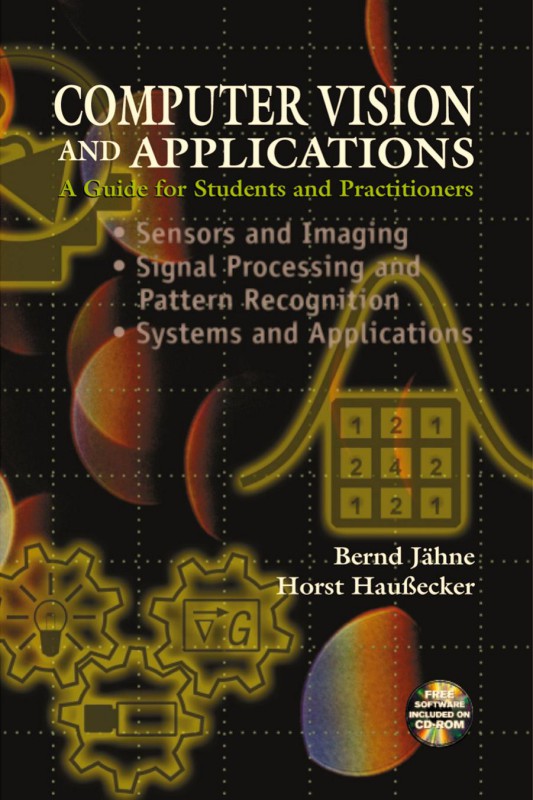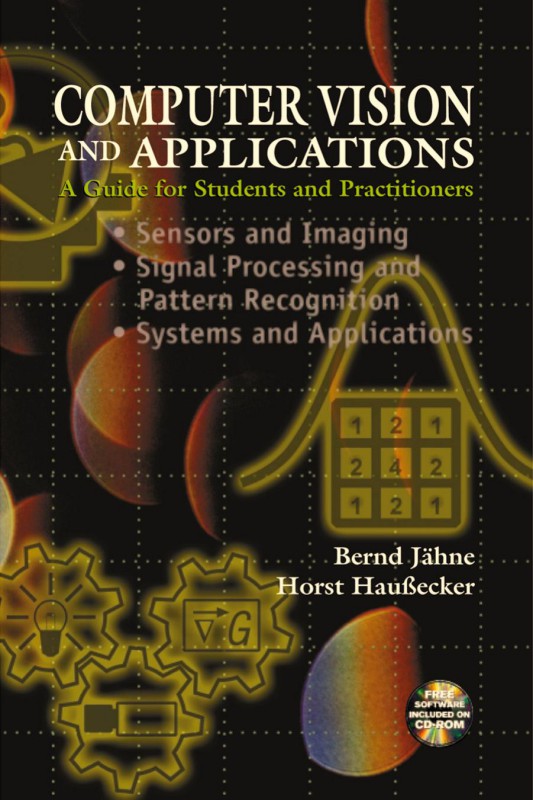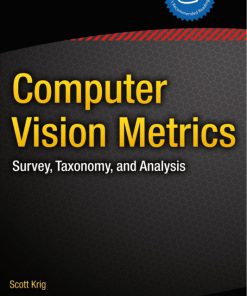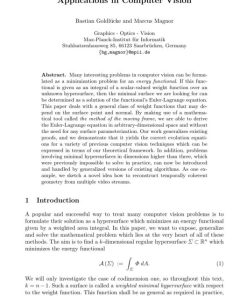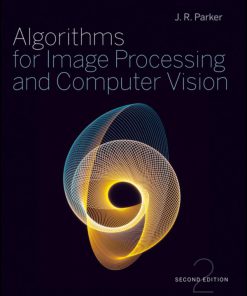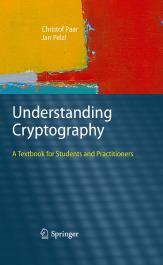Computer Vision and Applications A Guide for Students and Practitioners 1st Edition by Bernd Jahne ISBN 0080502628 9780080502625
$50.00 Original price was: $50.00.$25.00Current price is: $25.00.
Authors:B. Jaehne; H. Haussecker , Tags:computer vision , Author sort:Jaehne, B. & Haussecker, H. , Languages:Languages:eng
Computer Vision and Applications: A Guide for Students and Practitioners 1st Edition by Bernd Jahne – Ebook PDF Instant Download/Delivery. 0080502628, 9780080502625
Full download Computer Vision and Applications: A Guide for Students and Practitioners 1st Edition after payment
Product details:
ISBN 10: 0080502628
ISBN 13: 9780080502625
Author: Bernd Jahne
Computer Vision and Applications: A Guide for Students and Practitioners 1st Edition: Based on the highly successful 3-volume reference Handbook of Computer Vision and Applications, this concise edition covers in a single volume the entire spectrum of computer vision ranging form the imaging process to high-end algorithms and applications. This book consists of three parts, including an application gallery.
- Bridges the gap between theory and practical applications
- Covers modern concepts in computer vision as well as modern developments in imaging sensor technology
- Presents a unique interdisciplinary approach covering different areas of modern science
Computer Vision and Applications: A Guide for Students and Practitioners 1st Edition Table of contents:
Chapter 1. Introduction
- Components of a vision system
- Imaging systems
- Signal processing for computer vision
- Pattern recognition for computer vision
- Performance evaluation of algorithms
- Classes of tasks
- References
Part I: Sensors and Imaging
Chapter 2. Radiation and Illumination
- Introduction
- Fundamentals of electromagnetic radiation
- Radiometric quantities
- Fundamental concepts of photometry
- Interaction of radiation with matter
- Illumination techniques
- References
Chapter 3. Imaging Optics
- Introduction
- Basic concepts of geometric optics
- Lenses
- Optical properties of glasses
- Aberrations
- Optical image formation
- Wave and Fourier optics
- References
Chapter 4. Radiometry of Imaging
- Introduction
- Observing surfaces
- Propagating radiance
- Radiance of imaging
- Detecting radiance
- Concluding summary
- References
Chapter 5. Solid-State Image Sensing
- Introduction
- Fundamentals of solid-state photosensing
- Photocurrent processing
- Transportation of photosignals
- Electronic signal detection
- Architectures of image sensors
- Color vision and color imaging
- Practical limitations of semiconductor photosensors
- Conclusions
- References
Chapter 6. Geometric Calibration of Digital Imaging Systems
- Introduction
- Calibration terminology
- Parameters influencing geometrical performance
- Optical systems model of image formation
- Camera models
- Calibration and orientation techniques
- Photogrammetric applications
- Summary
- References
Chapter 7. Three-Dimensional Imaging Techniques
- Introduction
- Characteristics of 3-D sensors
- Triangulation
- Time-of-flight (TOF) of modulated light
- Optical Interferometry (OF)
- Conclusion
- References
Part II: Signal Processing and Pattern Recognition
Chapter 8. Representation of Multidimensional Signals
- Introduction
- Continuous signals
- Discrete signals
- Relation between continuous and discrete signals
- Vector spaces and unitary transforms
- Continuous Fourier transform (FT)
- The discrete Fourier transform (DFT)
- Scale of signals
- Scale space and diffusion
- Multigrid representations
- References
Chapter 9. Neighborhood Operators
- Basics
- Linear shift-invariant filters
- Recursive filters
- Classes of nonlinear filters
- Local averaging
- Interpolation
- Edge detection
- Tensor representation of simple neighborhoods
- References
Chapter 10. Motion
- Introduction
- Basics: flow and correspondence
- Optical flow-based motion estimation
- Quadrature filter techniques
- Correlation and matching
- Modeling of flow fields
- References
Chapter 11. Three-Dimensional Imaging Algorithms
- Introduction
- Stereopsis
- Depth-from-focus
- References
Chapter 12. Design of Nonlinear Diffusion Filters
- Introduction
- Filter design
- Parameter selection
- Extensions
- Relations to variational image restoration
- Summary
- References
Chapter 13. Variational Adaptive Smoothing and Segmentation
- Introduction
- Processing of two- and three-dimensional images
- Processing of vector-valued images
- Processing of image sequences
- References
Chapter 14. Morphological Operators
- Introduction
- Preliminaries
- Basic morphological operators
- Advanced morphological operators
- References
Chapter 15. Probabilistic Modeling in Computer Vision
- Introduction
- Why probabilistic models?
- Object recognition as probabilistic modeling
- Model densities
- Practical issues
- Summary, conclusions, and discussion
- References
Chapter 16. Fuzzy Image Processing
- Introduction
- Fuzzy image understanding
- Fuzzy image processing systems
- Theoretical components of fuzzy image processing
- Selected application examples
- Conclusions
- References
Chapter 17. Neural Net Computing for Image Processing
- Introduction
- Multilayer perceptron (MLP)
- Self-organizing neural networks
- Radial-basis neural networks (RBNN)
- Transformation radial-basis networks (TRBNN)
- Hopfield neural networks
- Application examples of neural networks
- Concluding remarks
- References
Part III: Application Gallery
People also search for Computer Vision and Applications: A Guide for Students and Practitioners 1st Edition:
computer vision algorithms and applications 2nd ed
computer vision and image processing fundamentals and applications
computer vision applications and algorithms
computer vision applications and algorithms pdf
machine vision and applications acceptance rate
You may also like…
eBook PDF
Algorithms for Image Processing and Computer Vision 2nd Edition by Parker 0470643854 978-0470643853

